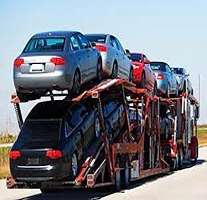Moving to a new state can be both exciting and overwhelming. You’re about to embark on a new chapter of your life, but the logistics of making that transition can seem daunting. From packing up your belongings to finding a reliable way to transport them, there are many factors to consider when planning a state-to-state move. And let’s not forget about your trusted vehicle – how will you ensure it safely makes the journey alongside you?
Fear not! In this guide, we’ll walk you through everything you need to know about smooth transitions when it comes to state-to-state moving and auto transport. So buckle up and get ready for an adventure-packed ride!
The Logistics of Moving
Moving to a new state involves much more than just packing up your belongings and hitting the road. It requires careful planning and organization to ensure a smooth transition. The first step in tackling the logistics of moving is creating a detailed checklist. This will help you stay organized and keep track of all the tasks that need to be completed before, during, and after the move.
One important aspect to consider is finding reputable movers or rental trucks if you plan on doing it yourself. Research different companies, read reviews, and get quotes to find the best option for your budget and needs. Don’t forget about any additional services you may require, such as packing assistance or storage facilities.
Next, make sure to update your address with all relevant parties – from government agencies like the DMV and IRS to subscription services like magazines or online retailers. This will help ensure that important mail doesn’t get lost during the transition.
When it comes time to pack up your belongings, it’s essential to have a strategy in place. Start by decluttering – sell or donate items you no longer need or use. Then, create an inventory list of everything you’re taking with you so nothing gets left behind.
As for packing materials, stock up on sturdy boxes in various sizes along with bubble wrap, packing paper, tape, and markers for labeling purposes. Pack room by room and label each box accordingly for easy unpacking later on.
Lastly, but certainly not least, don’t forget about utilities! Contact your current service providers (electricity, water) well in advance to schedule disconnection dates at your old home while also arranging connection dates at your new one.
By taking these logistical factors into consideration when planning a state-to-state move, you can minimize stress and maximize efficiency throughout the entire process of packing and unpacking.
Moving to a new state can be an exciting adventure, but the process of packing up your entire life and unpacking it in a new place can feel overwhelming. However, with some careful planning and organization, packing and unpacking can become more manageable.
When it comes to packing, start by decluttering. Take inventory of your belongings and decide what you really need to bring with you to your new home. Donate or sell items that no longer serve you, as this will not only save space but also reduce the cost of transporting unnecessary items.
Next, gather all the necessary packing supplies, such as boxes, tape, bubble wrap, and markers. Begin by packing non-essential items first – those things that you won’t need right away in your new home. Label each box clearly with its contents and the room it belongs to; this will make unpacking much easier later on.
When it’s time to pack fragile items like glassware or electronics, take extra care. Wrap them individually in bubble wrap or newspaper before placing them securely in boxes. Fill any empty spaces with crumpled paper or foam peanuts for added protection.
As for unpacking at your destination state, start by setting up essential rooms like the bedroom and bathroom first so that you have a comfortable space ready when fatigue sets in after a long journey.
Remember not to rush through the unpacking process. Take breaks when needed and tackle one room at a time. Unpack systematically from top to bottom; start with larger furniture pieces, then move on to smaller items as you go along.
By following these tips for efficient packing and unpacking during a state-to-state move, you’ll be able to transition smoothly into your new home without feeling overwhelmed!
Transportation of Household Goods: Smooth Transitions – A Guide to State-to-State Moving and Auto Transport.
When it comes to state-to-state moving, the transportation of household goods is a crucial aspect. After all the packing and unpacking, ensuring that your belongings are safely transported to your new location is essential.
To make this process smooth and hassle-free, it is recommended to hire a professional auto transport company. They have the expertise and resources to handle the transportation of your vehicles safely. Whether you need open or enclosed transport for your car, they can provide tailored solutions based on your needs.
Similarly, when it comes to transporting your furniture and other household items, hiring professional movers can save you time and effort. They will carefully load your belongings into their trucks using appropriate padding and wrapping materials to prevent any damage during transit.
Once everything is securely loaded onto the truck, it’s important to keep track of its progress throughout the journey. Reliable moving companies offer tracking services so you can monitor where your goods are at any given time.
Upon arrival at your new destination, professional movers will unload all of your belongings with care. You can choose whether you want them simply brought inside or if you would like assistance with unpacking as well.
Having professionals handle this final stage gives you peace of mind, knowing that every aspect of state-to-state moving has been taken care of efficiently. It allows for a smoother transition into settling down in your new home without having to worry about logistics anymore.
State-to-state moving requires careful planning and organization from start to finish. By following these tips for packing and unpacking efficiently, hiring professionals for auto transport, as well as handling household goods transportation, you’ll be able to navigate through this process smoothly. Remember that each step plays an integral role in ensuring a successful move, from researching reputable moving companies to organizing belongings effectively, so take the time needed upfront before embarking on this exciting journey! Happy moving!
Pros:
• Easy and convenient way to move and transport vehicles from one state to another
• Can save time and money by avoiding multiple trips
• Professional and safe handling of vehicles during the move
• Affordable, competitive rates
• Reliable, timely delivery
Cons:
• Limited availability in certain areas
• Possibility of damage to vehicles during transport
• Additional costs for packing and unpacking services
• Potential delays due to weather or other unforeseen circumstances
• Possibility of additional fees for additional services
FAQs:
1. How long does a typical state to state move take?
Answer: The average state to state move usually takes between 3-5 days, depending on the distance and the amount of items being transported.
2. What is the best way to prepare for a state to state move?
Answer: The best way to prepare for a state to state move is to start packing early, create a detailed list of items you are moving, and research your new state for any additional information that may be helpful in your move.
3. What is the cost of a state to state move?
Answer: The exact cost of a state to state move will vary depending on the size of your move, the distance, and any additional services you may need.
4. Is auto transport included in state to state moves?
Answer: Yes, auto transport can be included as part of your move if requested.
5. Are there any restrictions or regulations when moving out of state?
Answer: Each state has its own rules and regulations regarding the transportation of household goods and vehicles. It is important to check with your local DMV or Department of Transportation to ensure you are following the proper guidelines.
Features:
1. Door to Door Delivery: Professional movers provide door to door delivery of items from one location to another.
2. Experienced Movers: Professional movers are experienced and trained in moving items safely and quickly.
3. Packaging and Unpacking: Professional movers provide packaging and unpacking services for all items.
4. Auto Transport: Professional movers provide auto transport services from one location to another.
5. Secure Transportation: Professional movers provide secure transportation of items using the latest equipment and vehicles.
6. Insurance Coverage: Professional movers provide insurance coverage for all items being moved.
7. Tracking: Professional movers provide tracking services for all items being moved, enabling customers to monitor the progress of their items.
8. Storage Services: Professional movers provide storage services for items that need to be stored for a period of time.
9. Loading and Unloading: Professional movers provide loading and unloading services for all items.
10. Flexible Scheduling: Professional movers provide flexible scheduling for all customers, enabling customers to schedule their moves according to their own needs.

